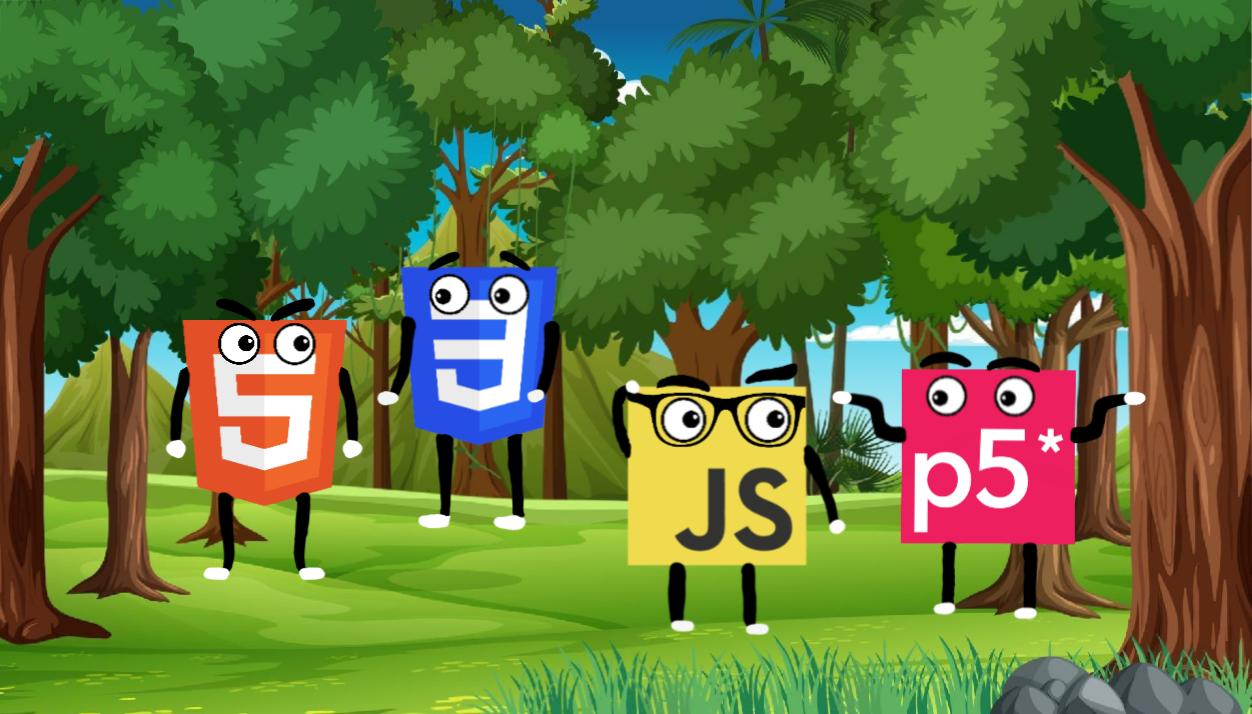Projects:
Fractal Tree
This is a simple fractal tree in which each branch divides into four other branches. The length of the branch decreases down to the minimun length. Move your cursor across the page to change the angle of the branchs.
Particles
This is a simple particle system where particles appear in the center and move outwards in a random direction as they fade away. Move your mouse to change the x and y speeds of the particles.
Additive Waves
This is a wave made from 25 sine waves added together so that it appears more random.
Fireworks
This is a simulation of fireworks. Particles are generated at the bottom and go up where they explode into many other particles.
Fractal Tree 2
This is a fractal tree that starts with one branch. Click to make more branches out from the main one. THis fractal tree is made a bit randomly so that it is more natural.
Flow Field
This is a flowfield made by many particles that move together and draw lines. Move your mouse to change the colour of the particles.
Light
This is a simulation of light and shadows. Many rays come out of the light and stop when they hit a wall. The light will follow you mouse.
Star
This is a star made with math to make curves. Move your mouse across the screen to change the number of points.
Flocking Simulation
This is a basic flocking simulation which is a system of particles that move in a similar way to a flock of birds, a school of fish, or a swarm of insects in nature. The first flocking simulation was made in 1987 by Craig Reynolds. You can change how they move with the sliders at the bottom.
Pendulum
This is a simulation of a pendulum which swings from right to left.
Pendulum Effects
This is a cool effect made by many pendulums of different lengths all swinging at the same speed. The effect is similar to a sine wave.
Maze Generator
This program generates a maze. Watch the maze appear and anjoy solving it!
Elastic
This is a simple simulation of an elastic or spring. Use your mouse to pull the elastic
Elastic 2
This is a simulation of a piece of elastic or string which streches. It is made up of many springs all connected at the ends. Use your mouse to pull it.
Solar System
This is a model of our solar system. This project is not finished yet so not all of the planets are there yet. Size and distance are so scale except for the Sun and Jupiter and all the speed is to scale. You can move around in the solar system with your mouse.
Analogue Clock
This is an analogue clock that displays the time of your computer.
Bar Clock
This is a bar clock that displays the time of your computer.
Snow
This is a simulation of snow where snow particles generate at the top and fall acording to their size.
Sine Wave
This is a simple sine wave.
Perlin Noise Graph
This is a graph of perlin noise. Perlin noise in similar to random but each number is similar to the one before and after it. This is often used for terrain generation.
Sine Elastic
This is a circle moved by sine on both the x-axis and the y-axis so that is appears like elastic.
Game of Life
This is the most simple game of life. Each cell can be either dead (black) or alive (red). Their state will change based on the cells around them. The first game of life was invented my John Conway in 1970. Other versions of the game of life have more than two states.
ASCII Mirror
ASCII art is making images using characters that have different density values ranging between @ and a space. The code gets the average brightness of each area of the image and draws the character with the same density. This uses your camera to make a live ASCII video.
|
